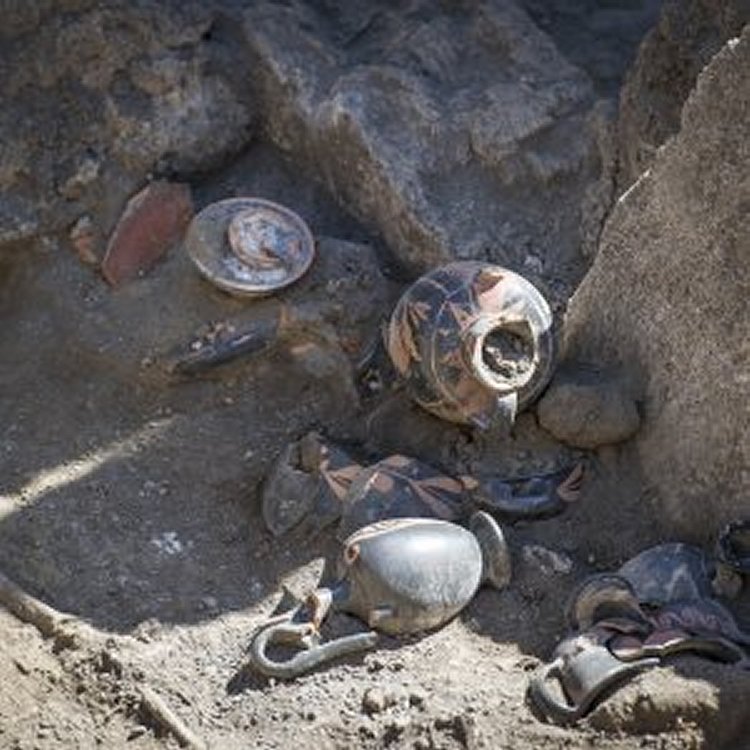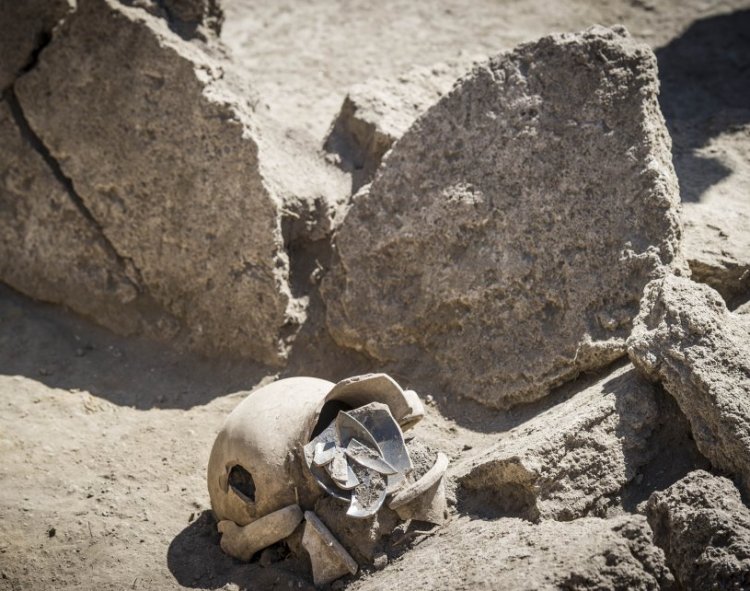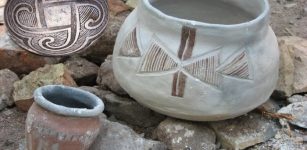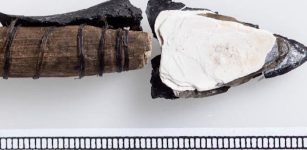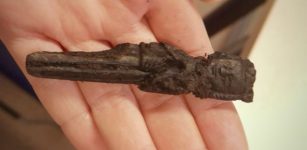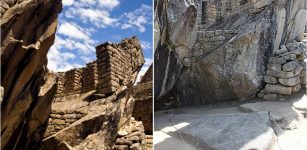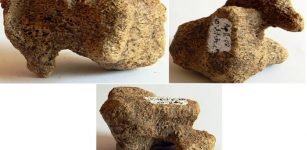A Rare Pre-Roman Tomb Unearthed In Pompeii
A rare pre-Roman tomb has been unearthed in Pompeii, shedding new light on life at the site in the fourth century BC.
The rare archaeological finding confirms that ancient Pompeii is still an inexhaustible source of scientific discoveries.
The tomb dates to the time of the Samnites, an Italic people living in south-central Italy who fought against the Romans. These tribes, spoke Oscan and were probably an offshoot of the Sabini, the parent stock of the Samnite tribes, who were also opponents of the Romans.
The Samnites - a member of the ancient warlike tribes - later helped Hannibal against Rome. They also fought from 90 bc in the Social War and later in the civil war against Lucius Cornelius Sulla, who defeated them at the Battle of the Colline Gate (82 bc)
The Samnites' unique tomb was found by surprise during a dig led by a French archaeological team from the Jean Bèrard center in Naples.
The team have already made several notable discoveries – including an exceptionally well preserved pottery workshop - but this latest could outdo them all.
“It is an exceptional find for Pompeii because it throws light on the pre-Roman city about which we know so very little,” said Massimo Osanna, the archaeological superintendent of Pompeii.
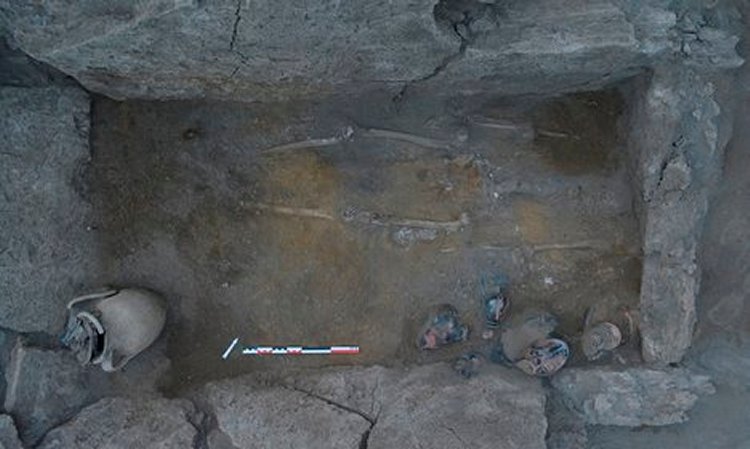
Perfectly preserved: the tomb was undisturbed for over 2,000 years. Photo: Archeological site of Pompeii press office
The tomb contains the remains of an adult woman, and has survived for more than two millennia without ever being disturbed or broken into.
Seemingly, the Romans knew of the tomb's presence and did not disturb the site or build on it before life in the city was wiped out – and frozen in time – in 79 AD.
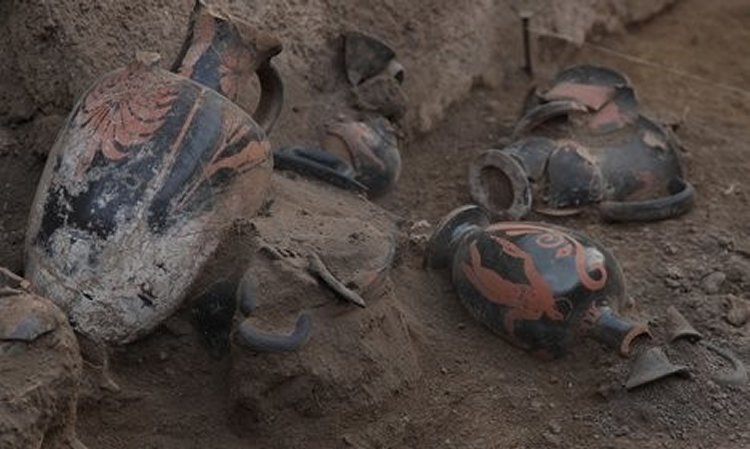
A rare Samnite tomb has been discovered in Pompeii, shedding new light on the site before it was a Roman city. Photo: Photo: Archeological site of Pompeii press office
The contents of the tomb will provide useful clues for scholars about the history of the site under the Samnites.
The woman was buried with a series of clay jars, or amphora, which come from other regions of Italy revealing the extent of trade between the Samnites at Pompeii and other groups living across the Italian peninsula.
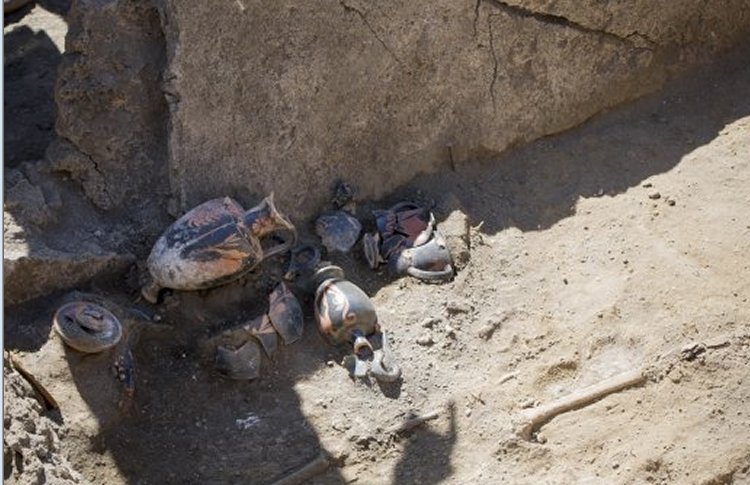
A rare Samnite tomb discovered in Pompeii, shedding new light on the site before it was a Roman city. Photo: Photo: Archeological site of Pompeii press office
The contents of the jars will be analyzed in the weeks to come – but are thought to contain cosmetics, wine and food.
“The burial objects will show us much about the role of women in Samnite society and can provide us with a useful social insight,” Osanna told reporters.
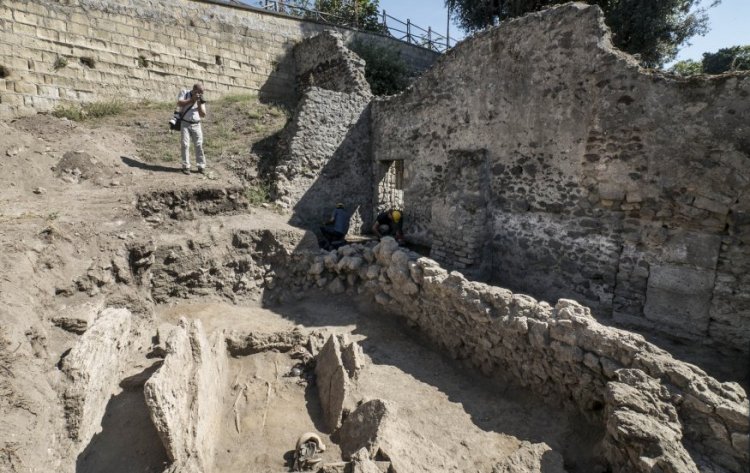
The woman was buried with a series of clay jars, or amphora, which come from other regions of Italy revealing the extent of trade between the Samnites at Pompeii and other groups living across the Italian peninsula.
The area around the grave will now be excavated to find out if there are more tombs nearby. As Osanna explains “Tombs are not normally found alone.”
However, the existence of other tombs is uncertain. During the Second World War, the area of Pompeii in which the grave was found was heavily shelled.
“It's a miracle that this has survived,”Osanna told reporters, “but I'm sure Pompeii has more gifts to give.”
AncientPages.com
source: The Local

